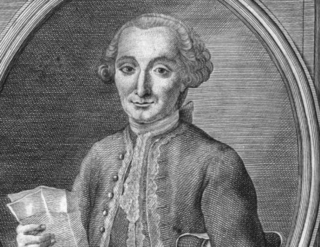
Alcamo is the fourth-largest town in the province of Trapani in Sicily, with a population of 44.925 inhabitants. It is on the borderline with the Metropolitan City of Palermo at a distance of about 50 kilometres from Palermo and Trapani.

Pozzo Ardizzi surname comes from the city of Vigevano province of Pavia, Italy, which was formed around the middle of the fifteenth century from a branch of the family that is separated from the noble surname Ardizzi.

The Sanctuary of Madonna dei Miracoli is a church in Alcamo, province of Trapani, Sicily, southern Italy; it is dedicated to the Madonna of the Miracles.

San Tommaso Apostolo is a former Catholic church located in Alcamo, in province of Trapani, Sicily, southern Italy.

Santa Maria della Stella is a former church located in Alcamo, in the province of Trapani, Sicily, southern Italy.

Sacro Cuore is a Catholic church located in Alcamo, in the province of Trapani.

The Sanctuary of the Most Holy Mary of the Height is a place of Marian devotion, located on the top of Mount Bonifato, in Alcamo in the province of Trapani, Italy.
Sebastiano Bagolino was a Latin poet and scholar.

Carlo Cataldo was an Italian historian, poet, and teacher.

Monsignor Vincenzo Regina was an Italian presbyter and historian.

Altamura Castle was a castle located in the city of Altamura, now completely demolished. It was located over today's piazza Matteotti and a few remains of it are still visible inside the adjacent buildings, which were built partly with stones and structural elements from the castle. In a warehouse are an ogival arch and some stone coats of arms. A few other remains are found in the adjacent buildings, which were built in the 19th century.
Cinzio Filonardi was a Roman Catholic prelate who served as Bishop of Terracina, Priverno e Sezze (1534).

Piazza Ciullo is the main square of Alcamo, in the province of Trapani. Being located in the very town centre, it is the meeting place for people and attraction for important events, especially for teenagers.

Cesare Orlandi was an Italian writer and historian. He was a nobleman of Fermo, Atri and Città della Pieve, and he's known only for his work Delle città d'Italia e sue isole adjacenti [sic] compendiose notizie (1770-1778), which contains comprehensive details and high-quality landscape views of many Italian cities. It was published in volumes over almost a decade (1770-1778). He is likely to be the "Abatte Cesare Orlandi" who edited and published an edition of Cesare Ripa's "Iconology" in 1764, which contains a portrait.

Massimo Santoro Tubito or Latin: Maximus Xanthorus Tubitus was an Italian priest and writer. He's best known for his books Divinum Theatrum (1702) and De Antichristo (1712), both of them written in Latin. The subjects covered are history and religion.
Domenico Santoro was a local historian and physician closely related to the city of Altamura, Kingdom of Naples. He's known mostly for his essay "Description of the city of Altamura" ,which was the first complete essay on the history of Altamura, Kingdom of Naples (Italy).

The Megalithic Walls of Altamura are defensive walls dating back to the 4th century BCE. They were the city walls of the ancient city of Altamura, Italy. Nowadays, only a few parts of the original wall remain; the original track of the wall spanned over a length of about 3.6 km. They were about 4 meters high, while the base of the walls was about 5 meters wide.

Porta Bari, previously called Porta de Bari, was one of the main gates of the city of Altamura, before the city walls of the city were torn down over the 19th century. Similarly to most European cities, the city walls were torn down, because the new technology and military techniques employed starting from the 19th century made them useless for defense purposes.

The Archaeological site of Mount Bonifato is located in Alcamo, in the province of Trapani, in Sicily.

The City Walls of Altamura were a military structure meant for defensive purposes and located in the city of Altamura, Italy. Its origin dates back to the Middle Ages and it was in use until the 19th century when it started to be gradually torn down. Nowadays only a few isolated parts of the walls survive. It shouldn't be confused with the Megalithic Walls of Altamura, which date back to the 5th–4th century BC and intersect in some parts with the city walls.


















